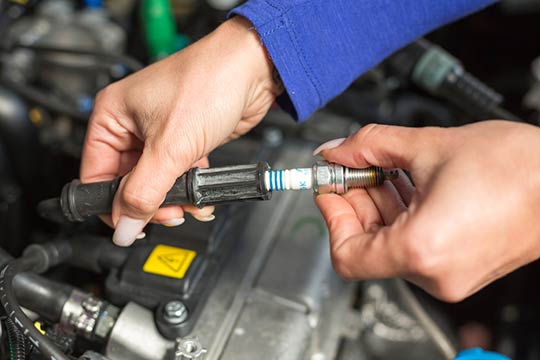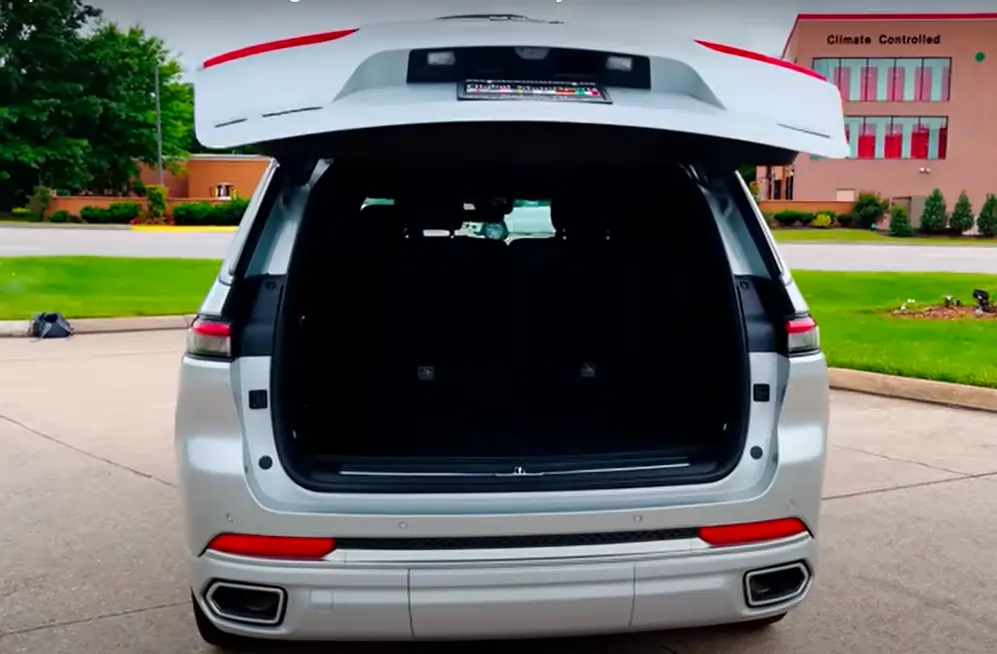Let the engine cool for at least 30 minutes before changing the spark plugs. Changing spark plugs in a hot engine can lead to burns and damage to the threading in the cylinder head.
To avoid these risks, it is crucial to give the engine enough time to cool down. This allows the metal components to reach a safe temperature, reducing the chances of accidents or complications during the spark plug replacement process. By following this simple precaution, you can ensure a smooth and hassle-free spark plug change, keeping your engine in optimal condition.
How Long To Let Engine Cool Before Changing Spark Plugs?
To ensure safety and prevent burns, it is recommended to let the engine cool for at least 30 minutes before changing spark plugs. This allows the components to cool down completely, reducing the risk of injury and ensuring a smoother replacement process.
Are you planning to change the spark plugs in your car? Before you dive in, it’s important to know how long to let your engine cool beforehand. The temperature of the engine can greatly impact the ease and effectiveness of changing spark plugs.
In this section, we will discuss the recommended duration for engine cooling before tackling this mechanical task.
Why Is It Important To Let The Engine Cool Down?
Allowing the engine to cool down before changing the spark plugs is crucial for several reasons:
- Avoiding injuries: Safety should always come first, and working on a hot engine can lead to burns or other injuries. By allowing the engine to cool, you minimize the risk and ensure a safer working environment.
- Preventing damage: Changing spark plugs on a hot engine can cause the metal threads in the cylinder head to expand. This expansion can result in stripped threads or other damage, which can be costly to repair.
- Easier removal and installation: When the engine is hot, the components can become sticky and make the removal process more difficult. Cooling down the engine ensures easier removal and installation of the spark plugs.
How Long Should You Wait?
Determining the appropriate cooling time for your engine depends on several factors, such as the type of engine and the duration of use. However, as a general guideline, it is recommended to wait at least 30 minutes to 1 hour after driving the vehicle before changing the spark plugs.
Factors To Consider:
Several factors can influence the cooling time required for your engine:
- Type of engine: Engines with larger capacities or turbocharged engines tend to generate more heat. These engines may require longer cooling times before spark plug replacement.
- Duration of engine use: Engines that have been running for longer periods may need additional time to cool down. If you’ve been driving your vehicle on a long trip, it is advisable to allow for a longer cooling period.
- Ambient temperature: Extremely hot or cold weather conditions can affect the cooling time needed. In extreme temperatures, it is wise to wait longer to ensure the engine is properly cooled.
Remember, these guidelines are general recommendations, and consulting your vehicle’s owner manual is always beneficial for specific instructions tailored to your car’s make and model.
What Are The Risks Of Changing Spark Plugs On A Hot Engine?
Changing spark plugs on a hot engine carries risks due to the potential for burns and damage to the engine components. It is recommended to let the engine cool for at least 30 minutes before attempting to change the spark plugs to avoid these risks.
Spark plugs play a crucial role in the ignition process of your vehicle’s engine, so it’s important to maintain them properly. One common question that arises is how long to let the engine cool before changing spark plugs. It’s vital to consider the risks involved in changing spark plugs on a hot engine to ensure the safety of both yourself and your vehicle.
Let’s explore these risks in more detail below:
Potential Risks:
- Heat-related injuries: Working on a hot engine exposes you to the risk of burns from touching hot surfaces. The various components of the engine can retain heat even after the vehicle has been turned off.
- Damage to spark plugs: The intense heat from a hot engine can cause expansion of the metal parts of the spark plugs. This expansion may make them difficult to remove, resulting in damaged threads or even broken plugs.
- Thread damage: Changing spark plugs on a hot engine increases the risk of damaging the threads in the cylinder head. Heat can cause the metal to expand, making it easier to strip the threads and potentially leading to costly repairs.
- Increased likelihood of accidents: Working on a hot engine can be challenging and potentially hazardous due to the surrounding hot surfaces. Accidentally touching a hot component can lead to burns, causing distractions that may result in accidents or injuries.
- Decreased overall performance: Changing spark plugs on a hot engine can negatively impact the overall performance of your vehicle. Heat can cause the metal parts to expand, making it difficult to remove and replace the spark plugs correctly, resulting in reduced efficiency and performance.
Remember, safety should always be a top priority when working on your vehicle. Waiting for the engine to cool down before changing spark plugs can help minimize these risks and ensure a smoother and safer process.
How To Safely Check If The Engine Is Cool Enough To Start The Process?
Before changing spark plugs, it’s crucial to ensure that the engine has cooled down sufficiently. Wait at least 30 minutes for the engine to cool before starting the process to avoid any potential damage or injury.
Before changing spark plugs in your engine, it is crucial to ensure that the engine has cooled down sufficiently. Failing to do so can result in burns or other injuries. Here’s how you can safely check if the engine is cool enough to start the process:
Methods To Verify If The Engine Is Cool:
- Touch the hood: Gently place your hand on the hood of the car and feel for any residual heat. If the hood feels warm or hot to the touch, it’s an indication that the engine is not cool enough. Wait for the hood to cool down before proceeding.
- Use a temperature gauge: If you have a temperature gauge installed in your car, check the reading to determine the engine’s temperature. If the gauge shows a high temperature, it’s a sign that the engine needs more time to cool down.
- Check the coolant level: Peer into the coolant reservoir to see if the coolant level is high. If the coolant level is low, it is likely that the engine is still warm. Wait until the coolant level rises, indicating that the engine has adequately cooled.
- Monitor the engine’s exhaust: Examine the color and consistency of the exhaust coming from the tailpipe. If you notice thick white smoke or excessive steam, it suggests that the engine is still too hot. Allow the engine to cool down further before proceeding.
- Consult the owner’s manual: Each car model may have specific recommendations regarding the cool-down period needed before changing spark plugs. Refer to the owner’s manual to understand the manufacturer’s instructions for your vehicle.
Remember, it’s crucial to prioritize safety over impatience when working with engines. Following these steps will help ensure that you safely check if the engine is cool enough to start the spark plug replacement process.
Are There Specific Spark Plugs That Require A Cooled Engine For Changing?
Specific spark plugs that require a cooled engine for changing depend on the manufacturer’s recommendations. It is generally recommended to let the engine cool for at least 30 minutes before changing spark plugs to prevent burns and ensure proper installation.
Changing spark plugs is an essential maintenance task for keeping your engine running smoothly. But how long should you let your engine cool before performing this task? And are there specific spark plugs that require a cooled engine for changing?
Let’s explore these questions in detail:
- Standard Spark Plugs: Most standard spark plugs do not have any specific requirements for engine cooling before replacement. You can typically change them whenever is convenient for you, regardless of whether the engine is hot or cold.
- Hot-Fire Spark Plugs: However, some performance spark plugs, known as “hot-fire” spark plugs, may require a cooled engine for changing. These plugs have a unique design and require a specific installation process. It is recommended to allow the engine to cool down completely before removing and installing hot-fire spark plugs to prevent any potential damage.
- Turbocharged or Supercharged Engines: If your vehicle has a turbocharged or supercharged engine, it is advisable to let the engine cool before changing spark plugs. These engines generate a significant amount of heat, and working on them while the engine is hot can be dangerous. It’s always better to err on the side of caution and wait for the engine to cool down before undertaking any maintenance tasks.
- Precautions: Regardless of whether you are dealing with standard or hot-fire spark plugs, there are a few precautions you should follow:
- Ensure the engine is turned off completely and the ignition key is removed before attempting to change the spark plugs.
- Use a rag or heat-resistant glove to protect your hands from any residual heat while removing the spark plugs.
- Avoid touching any metal surfaces near the spark plug area, as they can be hot and cause burns.
- Take your time and follow the manufacturer’s instructions for your specific vehicle to ensure proper installation.
Remember, safety should always be your top priority when working on any part of your vehicle’s engine. Letting the engine cool down before changing spark plugs is generally a good practice, especially for high-performance engines or turbocharged/supercharged engines. By following these guidelines, you can safely and effectively maintain your vehicle’s ignition system.
What Tools Are Needed For Changing Spark Plugs?
To change spark plugs, you’ll need a socket wrench, spark plug socket, extension, torque wrench, spark plug gap tool, and dielectric grease. Let your engine cool for at least 30 minutes before starting the process.
When it comes to changing spark plugs, having the right tools on hand is essential to ensure a smooth and efficient process. With the following tools, you’ll be well-equipped to tackle this task:
- Socket Wrench: A socket wrench is crucial for removing and installing spark plugs. Make sure to select one with the correct socket size for your specific vehicle model.
- Spark Plug Socket: This specialized socket features a rubber insert that securely holds the spark plug in place during removal and installation. It prevents damage to the plug and makes the job easier.
- Spark Plug Gap Tool: To ensure proper spark plug performance, it’s important to set the electrode gap to the manufacturer’s specifications. A spark plug gap tool allows you to easily measure and adjust this gap.
- Extension Bar: In some cases, spark plugs can be located in tight or hard-to-reach areas within the engine. An extension bar for your socket wrench provides the necessary reach to access these plugs effortlessly.
- Spark Plug Boot Puller: Spark plug boots can often become stuck or are difficult to remove by hand. A spark plug boot puller helps you grip and remove the boot without causing damage.
- Dielectric Grease: Applying a small amount of dielectric grease to the inside of the spark plug boot before installation can help ensure a tight seal and prevent moisture from penetrating the connection.
- Anti-Seize Compound: Applying a thin coat of anti-seize compound to the spark plug threads helps prevent them from seizing within the cylinder head over time. This makes future removal easier and protects the integrity of the threads.
- Torque Wrench: To avoid overtightening or undertightening the spark plugs, it’s crucial to use a torque wrench. This tool allows you to precisely tighten the plugs to the manufacturer’s recommended torque specification.
- Wire Brush: Before installing new spark plugs, it’s a good practice to clean the spark plug threads and the surrounding area. A wire brush can help remove any dirt or debris that may interfere with proper installation.
- Shop Manual or Online Resource: Each vehicle may have specific requirements and procedures for changing spark plugs. Having a shop manual or referring to reliable online resources can provide you with the necessary guidance for your specific make and model.
With these tools at your disposal, you’ll be ready to tackle the task of changing spark plugs like a pro. By taking the time to gather the proper equipment, you can ensure a successful and efficient spark plug replacement process.
What Is The Step-by-step Process Of Changing Spark Plugs?
To change spark plugs, the first step is to let the engine cool down completely. This can take anywhere from 30 minutes to an hour, depending on the engine and how long it has been running. Make sure to follow the manufacturer’s recommendations for the specific vehicle you are working on.
Changing spark plugs in your engine is an important maintenance task that can improve your vehicle’s performance and fuel efficiency. Here is a step-by-step guide to help you through the process:
Step 1: Gather The Necessary Tools And Materials
Before you start changing spark plugs, gather the following tools and materials:
- Spark plug socket and ratchet
- Spark plug gap tool
- Torque wrench (optional)
- Dielectric grease (optional)
- Anti-seize compound (optional)
Step 2: Locate The Spark Plugs
Pop open the hood of your vehicle and locate the spark plugs. They are typically attached to the engine block and are connected to thick wires known as ignition cables or spark plug wires.
Step 3: Remove The Ignition Wires Or Spark Plug Boots
Carefully disconnect the ignition wires or spark plug boots from each spark plug. Be gentle to avoid damaging the wires or boots.
Step 4: Remove The Old Spark Plugs
Using a spark plug socket attached to a ratchet, turn counterclockwise to remove the old spark plugs. Take note of their condition and inspect for any signs of damage or wear.
Step 5: Inspect And Gap The New Spark Plugs
Before installing the new spark plugs, inspect them for any defects or damage. Check the gap between the center electrode and the ground electrode using a spark plug gap tool. Adjust the gap if necessary.
Step 6: Install The New Spark Plugs
Carefully thread the new spark plugs into their respective cylinders by hand. Once finger-tight, use the spark plug socket and ratchet to tighten them further. Be cautious not to overtighten as it may cause damage.
Step 7: Reattach The Ignition Wires Or Spark Plug Boots
Reconnect the ignition wires or spark plug boots to the new spark plugs, ensuring they are securely fastened.
Step 8: Repeat For The Remaining Spark Plugs
Repeat steps 3 to 7 for each of the remaining spark plugs. Take your time to ensure that each spark plug is properly installed.
Step 9: Apply Dielectric Grease (optional)
If desired, apply a small amount of dielectric grease to the inside of each spark plug boot before reconnecting them. This helps keep moisture out and ensures a good electrical connection.
Step 10: Test The Engine
After completing the spark plug replacement, start the engine and check for any irregularities such as misfires or rough idling. If everything seems normal, you have successfully changed the spark plugs in your engine.
Remember to consult your vehicle’s manual or a trusted professional if you encounter any difficulties or have specific questions about your vehicle’s spark plug replacement process.
How Often Should Spark Plugs Be Changed?
Spark plugs should be changed every 30,000 to 100,000 miles, depending on your vehicle’s manufacturer recommendations. As for letting the engine cool before changing spark plugs, it’s best to wait at least 30 minutes to avoid any risk of burns from hot engine components.
Regular maintenance is crucial for optimal engine performance.
Regular maintenance of your vehicle’s spark plugs is essential for optimal engine performance. But how frequently should you be changing these crucial components? Let’s explore how often spark plugs should be replaced to ensure your engine runs smoothly and efficiently.
The Recommended Mileage Intervals:
To determine how often to change your spark plugs, it’s important to consider the recommended mileage intervals. Here’s a breakdown:
- 30,000 miles: Many manufacturers suggest replacing spark plugs every 30,000 miles. This interval provides good performance and fuel efficiency for most vehicles.
- 60,000 miles: Some vehicles with more advanced spark plug technology can go up to 60,000 miles before replacement is needed. These platinum or iridium plugs are designed to last longer and endure higher temperatures.
- 100,000 miles: If you have long-lasting double platinum or iridium spark plugs, they may be able to last up to 100,000 miles before requiring replacement.
Signs That Spark Plugs Should Be Changed:
While mileage intervals serve as a general guideline, it’s important to pay attention to your vehicle’s performance and watch out for signs indicating your spark plugs need changing. Look out for these symptoms:
- Decreased fuel efficiency: If you notice a decline in your vehicle’s gas mileage, it could be a sign that your spark plugs are no longer operating at their best.
- Difficulty starting your vehicle: If your engine struggles to start, especially in colder weather, worn-out spark plugs may be to blame.
- Rough idling: A rough and inconsistent idle can be a clear indicator that your spark plugs are in need of replacement.
- Engine misfires: Misfires, where the engine coughs or stutters, can occur when spark plugs fail to produce the necessary spark.
Factors Affecting Spark Plug Lifespan:
While recommended mileage intervals are a good starting point, several factors can affect the lifespan of your spark plugs. Consider the following:
- Driving conditions: Frequent stop-and-go driving, towing, or driving on rough terrain can wear out spark plugs faster.
- Vehicle age: Older vehicles may require more frequent spark plug replacement, as components naturally degrade over time.
- Fuel quality: Poor-quality fuel can increase the rate of spark plug deterioration.
- Electrical issues: Faulty ignition coils or wiring can cause spark plugs to wear down prematurely.
Consult Your Vehicle’s Manual:
To get the most accurate recommendation for spark plug replacement, always consult your vehicle’s manual. The manufacturer’s guidelines are tailored to your specific make and model, ensuring optimal performance.
Maintaining well-functioning spark plugs is crucial for the overall performance of your vehicle’s engine. By adhering to recommended mileage intervals, paying attention to warning signs, and considering various factors, you can ensure your spark plugs are changed at the right time, keeping your engine running smoothly.
Frequently Asked Questions On How Long To Let Engine Cool Before Changing Spark Plugs
Does Engine Need To Be Cold To Change Spark Plugs?
No, the engine doesn’t need to be cold to change spark plugs. It can be done when the engine is warm, but be cautious to avoid burns.
How Long Should You Wait To Change Spark Plugs?
It is recommended to change spark plugs every 30,000 to 100,000 miles, depending on the type of spark plugs used in your vehicle. Regular maintenance helps ensure optimal performance and fuel efficiency. Check your vehicle’s owner manual for specific recommendations.
Can You Change Spark Plug Wires While Engine Is Hot?
No, it is not recommended to change spark plug wires while the engine is hot. It is best to wait for the engine to cool down before attempting any maintenance on the spark plug wires. Doing so while the engine is hot can lead to burns and other safety hazards.
Should I Run My Engine Before Changing Spark Plugs?
No, it’s not necessary to run the engine before changing spark plugs.
Conclusion
To summarize, allowing your engine to cool down before changing spark plugs is a crucial step in maintaining optimal performance and longevity. By giving the components time to cool, you reduce the risk of burns and ensure a safer working environment.
Additionally, this practice allows for easier removal and installation, ultimately leading to a smoother and more efficient spark plug replacement process. So, remember to exercise patience and give your engine the cooling time it deserves before undertaking this routine maintenance task.














Leave a Reply